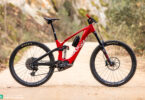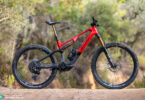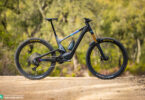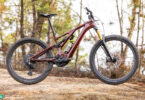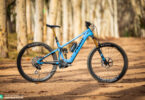Characteristics and application range of the eMTBs in our group test explained in detail
“Which bike is the right one for me? What is the character of a specific eMTB and what is its range of use?” To make it easier for you to answer these questions, every year we conduct our eMTB comparison test with the most exciting bikes of the season. Here you’ll find everything you need to know about our rating system.
Design
As we all know, there’s no accounting for taste. But while you can argue about paint finishes and colour schemes, the formal design language is based on clear principles: does the frame draw elegant lines, are the proportions harmonious and does the manufacturer use visual and technical accents? The integration of the motor components and other parts play a role in this too.
Quality
We summarize many quality aspects in this section. These include haptics, reliability, paint and surface quality, and the workmanship of the frame and components. Weld seams, gap dimensions are just as much a part of this as the cable routing, possible points of friction between the frame, cables and chain or noise development during the ride. Are high-quality bearings used? How maintenance-friendly are the cables and components installed in the frame?
Usability
Usability describes the many aspects that arise when handling an eMTB on the trail or tour. How easily accessible are the charging port and the battery? Can the battery be removed for charging at all? Do you need a tool or key for this or neither? How intuitive is the operation of all cockpit elements? Are there aids to set up the suspension quickly and easily? The weight also plays a role here: can you easily carry the eMTB through the stairwell into the apartment or load it onto the roof rack?
Price-performance
When it comes to price-performance ratio, it’s not a matter of installing the most expensive components available on an eMTB and then offering it at a bargain price. What matters is how much riding fun and riding performance, design and quality you get for your money. An smart manufacturer can put together a more coherent package with cleverly selected low-priced components than an inexperienced manufacturer who only uses the most expensive components. If the manufacturer succeeds to tie a coherent package that fits the character of the eMTB, then just the performance is right. Only when the price is fair, the price-performance ratio is also right.
Beginner friendliness and suitability for experts
When dealing with eMTBs, you encounter characters like those of many of your fellow human beings: there are demanding divas, where you have to pay meticulous attention to every body movement you make so as not to startle them. And then there’s the good-natured, easygoing type that doesn’t get rattled so easily. This easy-to-control intuitiveness is what we look for in a beginner-friendly eMTB. It has a forgiving attitude towards riding mistakes at moderate speeds and gives you early feedback when you reach the bike’s limits. An expert-friendly eMTB does not exclude beginner-friendliness, but this kind of bike often needs to be ridden at high speeds to show its potential. It rewards active riders with a high fun factor. An expert-grade eMTB may demand more riding skills from the biker, but it must then really take off under an experienced hand.
Everyday use
Everyday use includes the daily commute to work as well as shopping with full bags or at dawn in poor weather and visibility conditions. Here, practical features such as a kickstand mounting option, a lighting system with high beam function, a mount for mudguards and a luggage rack, and trailer approval pay off. On the usually rather short errand rides, long-distance comfort is not as important as, for example, an upright riding position for good all-round visibility or a way to easily secure the bike against theft.
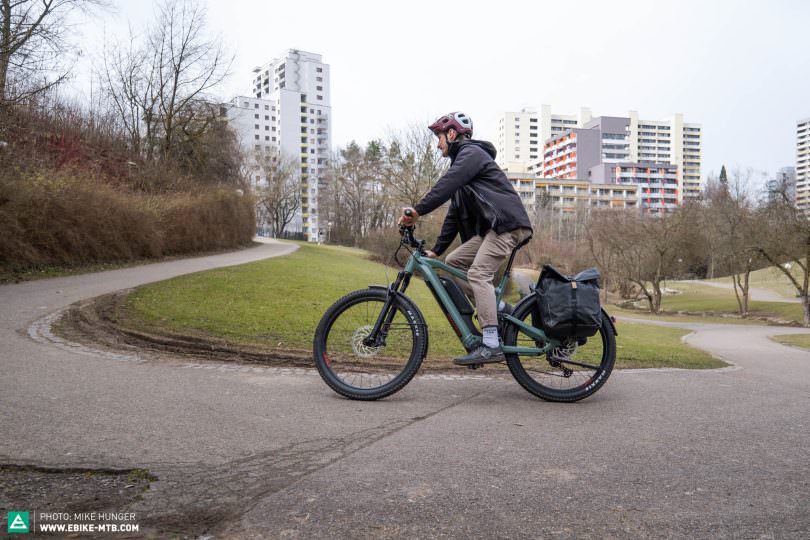
Touring
Touring suitability includes good long-distance comfort, which results primarily from a relaxed and ergonomic riding position, a comfortable suspension and powerful but well-dosed motor assistance. At the same time, a touring-friendly eMTB should have a long range, have mounting options for a luggage rack and, in the best case, allow a high payload so that you are still within the permissible total weight even with fully loaded bags.

Flowtrails
Flowtrails are predominantly routes with long mellow turns, rather moderate uphill and downhill slopes and few obstacles, where it’s all about a good flow of riding. An eMTB is suitable for flow trails if it pops off willingly into the air and actively invites you to play with the terrain thanks to its light-footed and agile handling.
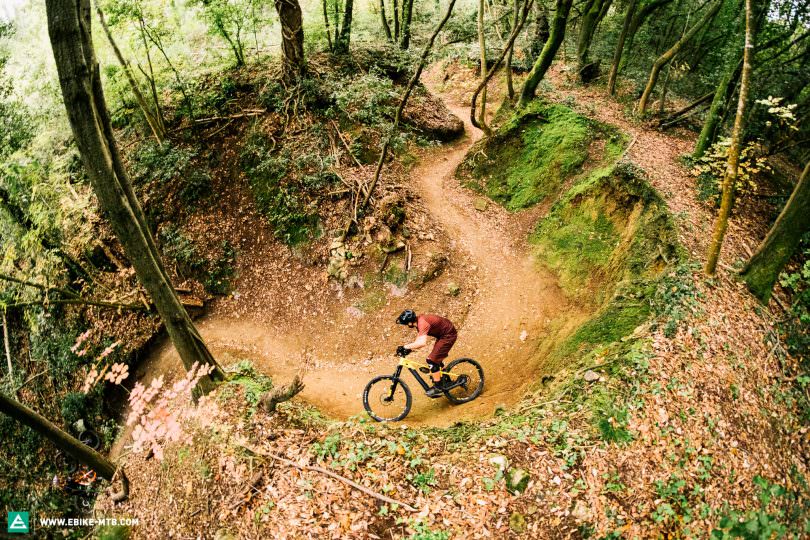
Fast and rowdy
If the sight of the descent gets your adrenaline pumping, you know what we’re talking about. Challenging singletracks and built trails, peppered with obstacles, root carpets and fast open curves, which can also be rough. Here, high reserves, strong traction and lots of composure are essential.

Technical climbs
Technical climbs lead up the trail over roots or rocks. Tight turns and loose ground demand a high degree of balance. How well does the bike keep track at such key sections and help the ebiker over the obstacles with finely dosed motor assistance?
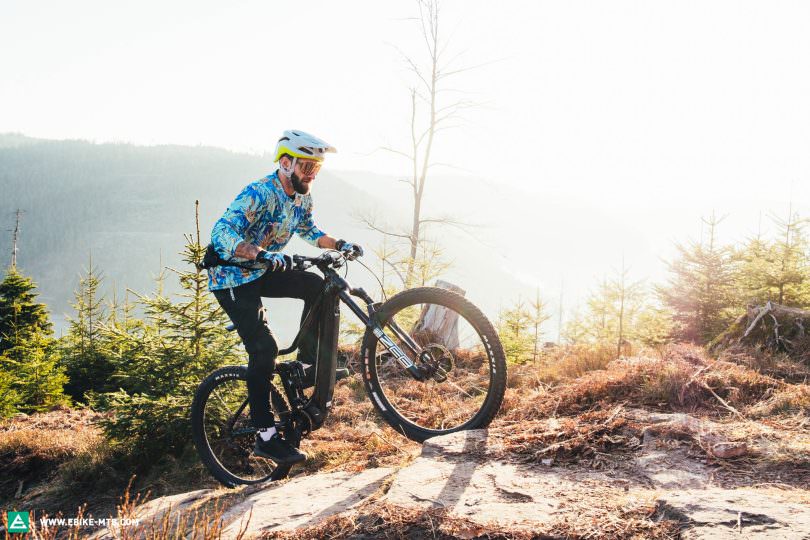
Did you enjoy this article? If so, we would be stoked if you decide to support us with a monthly contribution. By becoming a supporter of E-MOUNTAINBIKE, you will help secure a sustainable future for high-quality cycling journalism. Click here to learn more.



